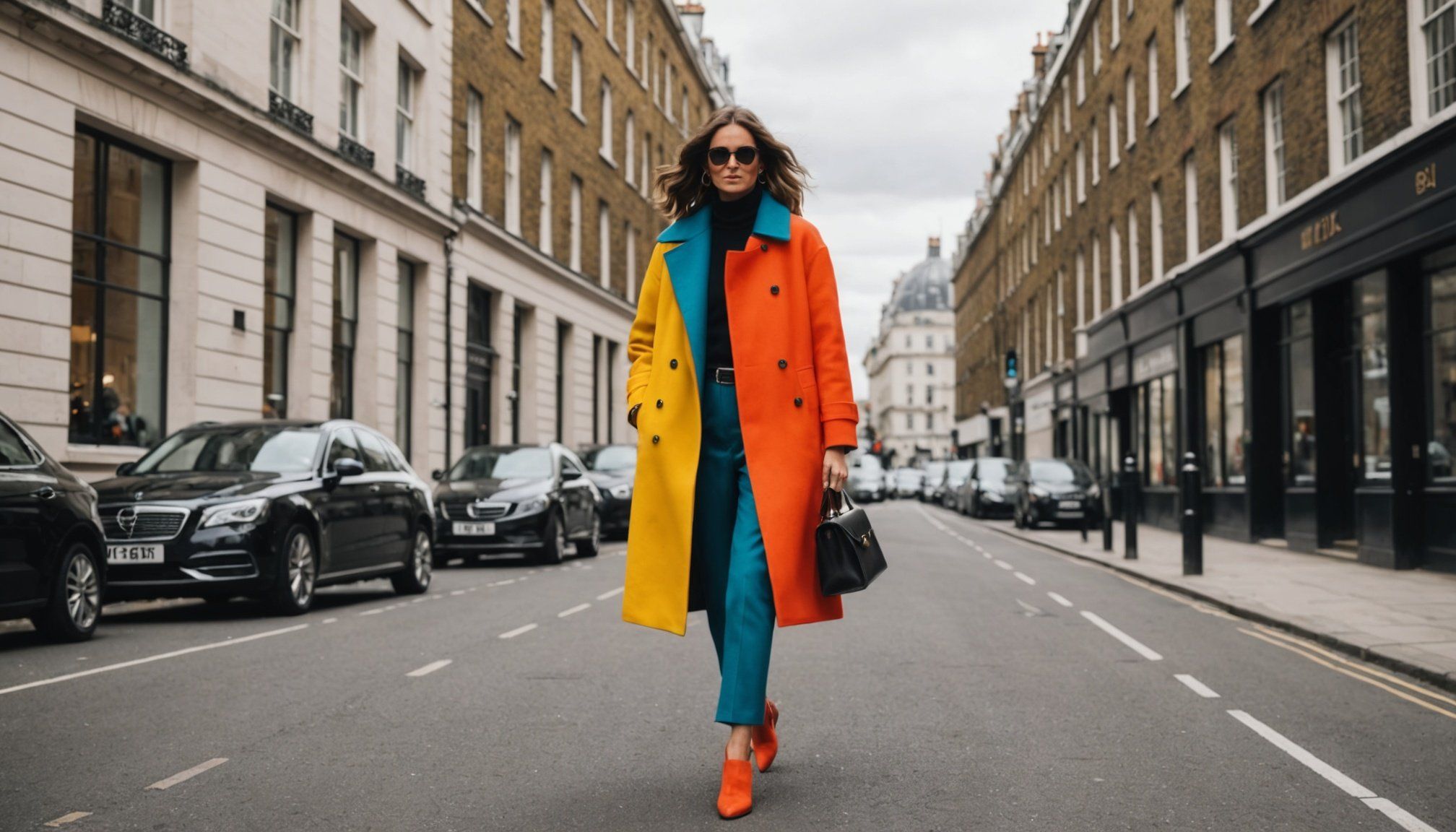Understanding Color Blocking in Winter Fashion
Color blocking is a design technique that juxtaposes distinct blocks of color to create striking contrasts within an outfit. Historically, it gained prominence in the 1960s, inspired by modern art movements. This approach to fashion involves combining colors that may not traditionally be paired, thus creating a visually stimulating effect.
In winter fashion, color blocking offers warmth and originality, ideal for brightening the dreary atmosphere during colder months. It allows for creative versatility by transforming dull winter wardrobes into vibrant displays. The practicality of color blocking in winter lies in its ability to blend warmth with style, making it particularly effective for combating the season’s typical monochrome tendencies.
In parallel : Transform your home office: uncover the ideal fusion of comfort and style with uk knitwear
Key Elements for Winter Color Blocking
When implementing color blocking in winter, several elements should be considered:
- Material Selection: Opt for heavy fabrics that can hold bold colors effectively, ensuring comfort and warmth.
- Color Choices: Utilizing hues from the winter palette – such as deep reds, blues, and greens – adds a season-appropriate touch to your ensembles.
- Layering Techniques: Integrating color blocking within layers adds depth and dimension to winter looks, helping to maintain a cozy yet chic appeal.
Bold colors need careful planning to avoid overpowering the outfit. By focusing on a balanced color scheme, one can master the art of winter color blocking effortlessly.
In parallel : The ultimate guide to packing: effortlessly curate stylish travel outfits for weekend escapes
Choosing the Right Color Combinations
In the realm of fashion, selecting color combinations is pivotal for crafting stylish outfits, particularly in the winter months. The winter palette offers a rich variety of hues, from deep maroons to muted greys. Understanding the balance between bold and subtle hues can elevate any ensemble.
Bold vs. Subtle Color Blocking
To achieve a striking effect, incorporate bold colors, such as emerald green and royal blue, but use them sparingly to prevent overwhelming your outfit. If your goal leans towards sophistication, muted tones like burgundy and slate can provide an understated elegance. These tones act as a canvas, allowing more vibrant colors to stand out without dominating the look.
Complementary and Contrasting Colors
The color wheel is a valuable tool in choosing complementary colors. By selecting colors opposite each other on the wheel—like navy and orange—you create a visually harmonious effect. For winter, consider pairing forest green with plum or mustard with charcoal to add depth and interest.
Seasonal Color Trends in London
London’s urban style embraces innovative, chic color blocking. Current trends highlight how vintage-inspired earth tones intertwine with vibrant shades, providing an exciting twist to traditional winter colors. Experimenting with these combinations can capture the essence of contemporary London fashion.
Practical Outfit Ideas for Color Blocking
Color blocking isn’t just a technique; it’s a gateway to revamping your winter wardrobe while fighting off the cold. Layering techniques play a pivotal role in infusing warmth and style into winter looks. By stacking clothes creatively, you can remain both snug and fashionable.
Daytime Chic: Casual Color Blocked Outfits
Creating casual, color-blocked outfits for daytime involves balancing comfort and flair. Consider pairing a bold color trench coat with a muted knit sweater and colourful scarves. This combination ensures a vibrant look without losing the cosy appeal. Layering is crucial; not only does it add warmth, but it also introduces texture and depth to your ensemble.
Evening Glam: Dressy Color Blocked Ensembles
For a more formal evening, colour-blocked peach and navy dresses epitomise elegance. These tones bring a modern twist, while accessories like metallic clutches and statement earrings further enrich the overall ensemble. Consider incorporating tailored outerwear that complements the colour palette for added sophistication.
Office-Ready Color Blocking
Incorporating color blocking into professional attire involves subtlety. Opt for bold coloured blouses beneath neutral blazers or cardigans. By integrating bold hues sparingly, complemented by neutral accessories, you create an office-appropriate look without being overwhelming. It’s about striking a confident yet understated style.
Styling Tips for Urban Environments
Navigating the unpredictable London weather while maintaining a chic, winter look can be a challenge. Embracing urban fashion styled with color blocking can be an effective technique to stand out, especially when done with London styling in mind. In urban settings, clothing not only needs to be stylish but also practical.
When adapting color blocking techniques to everyday city life, consider using vibrant outerwear as your statement piece. Capes or bold trenches in contrasting colors can offer warmth and elegance. Opting for winter layering beneath allows you to manage temperature changes while keeping functional and stylish—think layers of muted hues that balance the bolder top layer.
Footwear is another essential component, especially in a city famous for its cobbled streets. Pair your color-blocked outfit with neutral or contrasting colored boots to maintain the visual flow. Integrating accessories is vital too, such as vibrant bags or scarves, providing both practicality and flair.
In urban fashion, adaptability is key. Swift shifts in weather call for flexibility, and creating London styling outfits that can transition from dreary mornings to sunny afternoons enhances your city wardrobe. Maintaining the balance of functionality and style ensures your winter looks remain consistently captivating.
Visual Inspiration and Examples
Visual examples and fashion imagery play vital roles in shaping how we approach modern techniques like color blocking. Especially in winter fashion, these elements provide both guidance and style inspiration for those eager to experiment with bold aesthetics.
Iconic Color Blocked Looks in Fashion History
Color blocking has roots in fashion history, prominently seen in the vibrant pieces of Yves Saint Laurent who embraced vivid contrasts inspired by modern art. Over time, this technique has evolved with influencers and social media magnifying its reach. Notable fashion figures, like Solange Knowles, have championed bold color blocking, showcasing its potential in everyday dressing. Fashion imagery, both historical and contemporary, significantly impacts how individuals interpret and employ color blocking in their wardrobes.
Color Blocking in Street Style
The streets of London embody style inspiration, with many adopting color blocking in their casual looks. Real-life examples of bold yellow jackets paired with muted scarves highlight the synergy between fashion imagery and personal style choices. This approach often trickles into mainstream trends, demonstrating its lasting impact.
Creating a Lookbook
Building a personal lookbook is quintessential for style evolution. Document outfits utilizing color blocking, allowing reflections on what works best and inspiring future fashion imagery. This practice aids in curating a wardrobe that resonates with one’s personal aesthetic.








